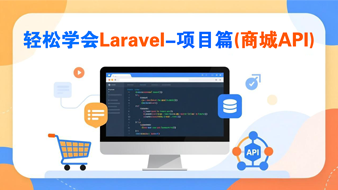搜索
历史记录 清除记录
- 你还没搜索过喔。
Java数据类型教程 - Java数组参数
数组参数
我们可以将数组作为参数传递给方法或构造函数。
我们传递给该方法的数组的类型必须是与形式参数类型兼容的赋值。
以下代码显示了如何将Array作为方法参数传递。
public class Main {
public static void main(String[] args) {
int[] num = { 1, 2 };
System.out.println("Before swap");
System.out.println("#1: " + num[0]);
System.out.println("#2: " + num[1]);
swap(num);
System.out.println("After swap");
System.out.println("#1: " + num[0]);
System.out.println("#2: " + num[1]);
}
public static void swap(int[] source) {
if (source != null && source.length == 2) {
// Swap the first and the second elements
int temp = source[0];
source[0] = source[1];
source[1] = temp;
}
}
}
上面的代码生成以下结果。

数组参数参考
因为数组是一个对象,所以它的引用的副本被传递给一个方法。
如果方法更改数组参数,实际参数不受影响。
import java.util.Arrays;
public class Main {
public static void main(String[] args) {
int[] origNum = { 1, 2, 3 };
System.out.println("Before method call:" + Arrays.toString(origNum));
// Pass the array to the method
tryArrayChange(origNum);
System.out.println("After method call:" + Arrays.toString(origNum));
}
public static void tryArrayChange(int[] num) {
System.out.println("Inside method-1:" + Arrays.toString(num));
// Create and store a new int array in num
num = new int[] { 10, 20 };
System.out.println("Inside method?2:" + Arrays.toString(num));
}
}
上面的代码生成以下结果。

数组参数的元素
存储在数组参数的元素中的值可以在方法中始终更改。
以下代码显示了如何更改方法中的数组参数的元素。
import java.util.Arrays;
public class Main {
public static void main(String[] args) {
int[] origNum = { 1, 2, 3 };
String[] origNames = { "Java", "SQL" };
System.out.println("Before method call, origNum:"
+ Arrays.toString(origNum));
System.out.println("Before method call, origNames:"
+ Arrays.toString(origNames));
// Call methods passing the arrays
tryElementChange(origNum);
tryElementChange(origNames);
System.out.println("After method call, origNum:"
+ Arrays.toString(origNum));
System.out.println("After method call, origNames:"
+ Arrays.toString(origNames));
}
public static void tryElementChange(int[] num) {
if (num != null && num.length > 0) {
num[0] = -1;
}
}
public static void tryElementChange(String[] names) {
if (names != null && names.length > 0) {
names[0] = "T";
}
}
}
上面的代码生成以下结果。

例子
以下代码显示如何更改对象数组元素。
class Item {
private double price;
private String name;
public Item(String name, double initialPrice) {
this.name = name;
this.price = initialPrice;
}
public double getPrice() {
return this.price;
}
public void setPrice(double newPrice) {
this.price = newPrice;
}
public String toString() {
return "[" + this.name + ", " + this.price + "]";
}
}
public class Main {
public static void main(String[] args) {
Item[] myItems = { new Item("Pen", 2.11), new Item("Pencil", 0.10) };
System.out.println("Before method call #1:" + myItems[0]);
System.out.println("Before method call #2:" + myItems[1]);
// Call the method passing the array of Item
tryStateChange(myItems);
System.out.println("After method call #1:" + myItems[0]);
System.out.println("After method call #2:" + myItems[1]);
}
public static void tryStateChange(Item[] allItems) {
if (allItems != null && allItems.length > 0) {
allItems[0].setPrice(0.38);
}
}
}
上面的代码生成以下结果。

© 著作权归作者所有
举报
综合评分:9.9 评分 请对本文进行纠错,及学习过程中有困难疑惑可在此进行讨论
发表评价或提出疑问(可获得2-8个猿宝)
文章评分:
请选择内容评分
难易程度:
太简单
简单
适中
有点难
太难了
请选择课程难易程度 (+2个猿宝)






 点击刷新
点击刷新

